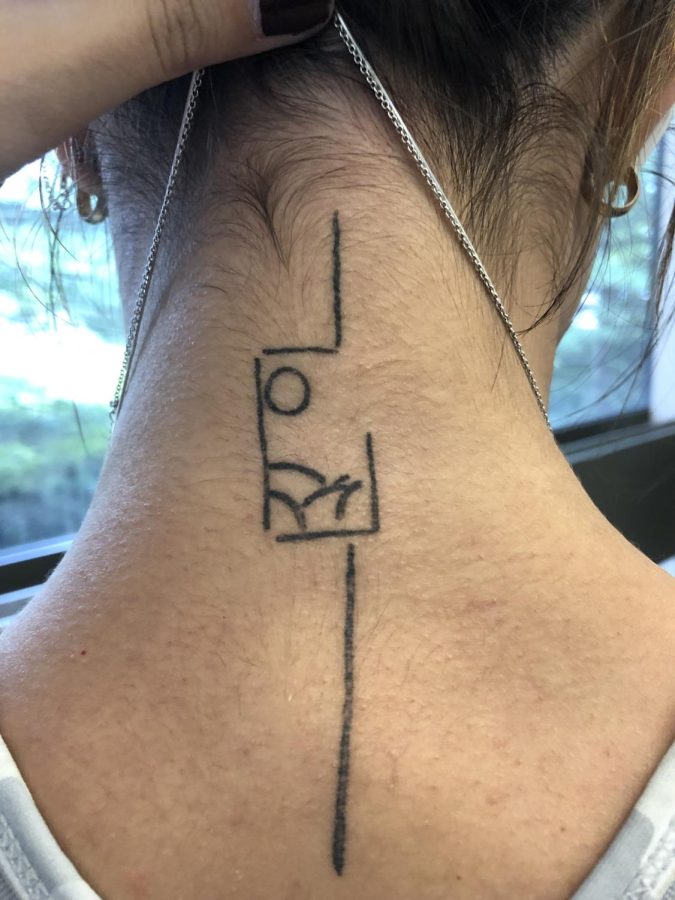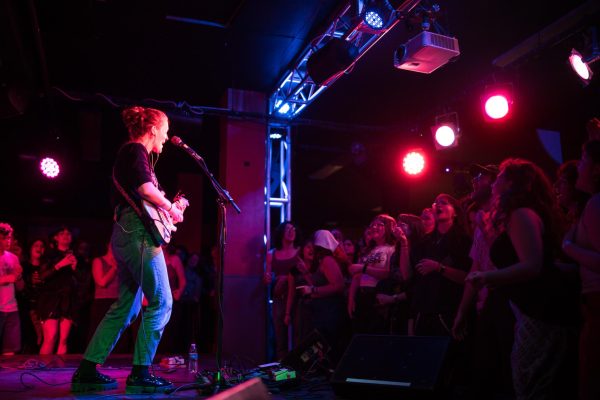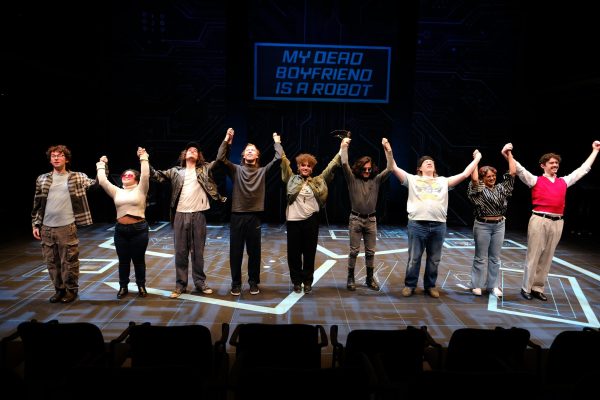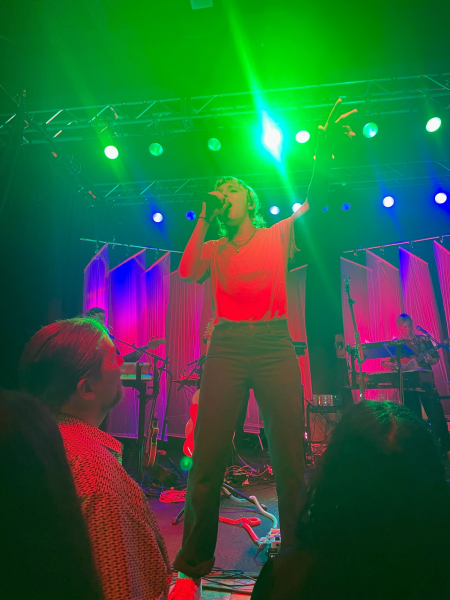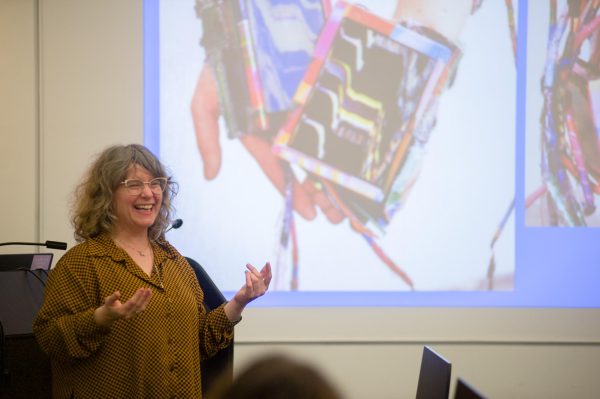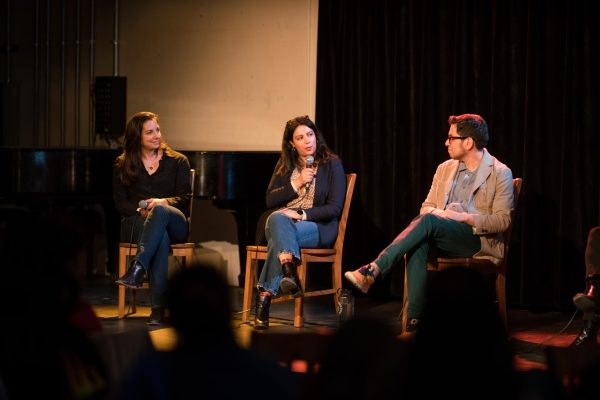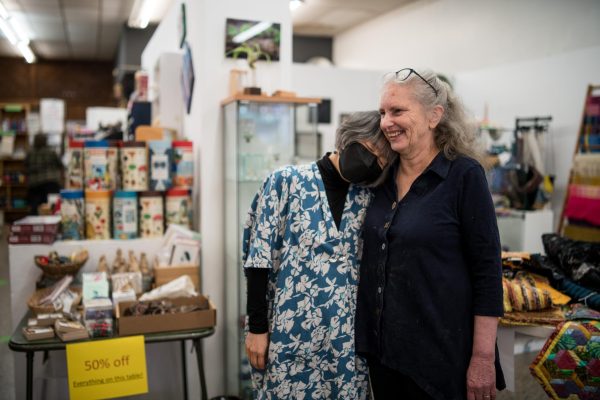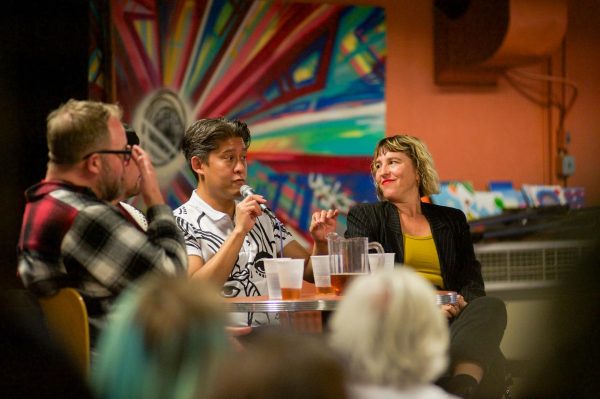Oberlin Students Tell Their Stories Through Tattoos
When walking through campus in the warmer months, students can be seen showing off their tattoos. Tattoos are often meaningful; they may give insight into a person’s hobbies, interests, and experiences. They may also just look cool. Either way, many students on campus have stories to tell through their tattoos.
College third-year Finn Miller shared his personal stories behind his two tattoos. Taking inspiration from his connection to Judaism, Miller applied religious phrases to his own experiences.
“One of them is on my thigh, and it’s the Hebrew word hineni, which means ‘I am here’ or ‘I am ready,’” he explained. “But for me it doesn’t have that much of a religious meaning. It’s more that I reached a point in my life with my gender transition and also with my mental health where I finally felt like I was showing up authentically as myself, as a trans man. Feeling male and also feeling like I was more in charge of my day-to-day life, rather than having my feelings overtake my day to day.”
Miller also explained a tattoo on his bicep.
“It’s ehyeh-asher-ehyeh, which is ‘I am what I am,’ but because of the complexity of Hebrew grammar, there’s no present tense of the verb ‘to be,’ so it can also be ‘I was who I was’ and ‘I will be who I will be’. … The meaning of it is to remind myself that whoever I was in the past was enough to get me to where I am today, who I am today is enough to get me to where I’m gonna be in the future, and all those versions of myself are equally valid and equally helpful.”
Miller doesn’t want to stop his tattoo collection there. He plans to get more, and this time he wants something visual rather than another quote.
“I constantly think of getting more,” he said. “One of the ones that I want is more picturesque, rather than the text that I have right now, but I think that’s where the Hebrew works well because … it is somewhat picturesque in a way. Other people can’t necessarily tell what it is from the outside. I like that kind of mystery. I get to decide what’s on my body, and I get to decide the meaning without people assuming from sight.”
College third-year Claire Schmelzer also has a tattoo of a quote that not everyone can decipher at first glance. It’s her only tattoo, and it’s written in Elvish.
“The meaning of the tattoo is, ‘This too shall pass,’ and it’s written in Sindarin, which is the Elvish language that J. R. R. Tolkien came up with when he was writing the lore behind [The] Lord of the Rings,” Schmelzer said. “The quote is said by Gandalf. … It’s something that my parents heard in [The] Lord of the Rings and it’s something that they would say to me pretty much any time that I was having an emotional breakdown in front of them. ‘Claire, this too shall pass.’ It was something that I heard a lot growing up and also would try to keep in mind for myself.”
The tattoo serves as a constant reminder for Schmelzer that everything will eventually be okay.
“In the books, it is literally the end of the world,” she said. “It’s an issue so big that I cannot even comprehend the problems that they were facing, and it really did pass, they were right. I think it’s just a good thing to remember, and it looks dope.”
College third-year Martina Taylor’s first tattoo also helped them feel more in control of their emotions in a broader way. Although their first tattoo doesn’t carry specific meaning, the reasoning behind their decision to get the tattoo does.
“The first one is a snake on my right arm,” Taylor said. “I got it when I turned 18. It was COVID summer, and I was in a very conservative school for 13 years. I needed to do something bold and something I [was] a little bit scared of.”
Often when advising against getting a tattoo, people warn that it will be on your body forever. This, however, did not faze Taylor when getting their second tattoo. Instead, the permanence of a bug on their leg holding a magic wand was a source of comfort.
“My second one I got this summer,” they explained. “I moved to New York for a job that I got myself. So there were a lot of big changes in independence. My bug is my little guide, because it wasn’t a very fun summer. So the bug was a little guy to keep me company.”
When choosing a tattoo artist, some pick those with a clear vision and good technique. Others choose the artist based on their art. Both of Taylor’s tattoos have been done freehand, giving the artists creative license.
“All of mine are freehand, so I want to continue that,” Taylor said. “They draw on you and they’re really communicative. I feel like it’s almost less of a scary commitment to me, because I’m really, really present with it being made. Whereas if it was just like a piece of flash or something they made beforehand, I think I would spend hours deliberating on how I felt about it.”
College third-year Shira Friedman-Parks has five tattoos: one on her thigh, one on her ankle, one on her arm, and two nipple tattoos.
“None of my tattoos have meaning,” Friedman-Parks said. “None of them have really been planned. I follow a lot of tattoo artists. I really like the idea of collecting art on your body over time, which is why I wanna spread it out. I’m really into flash. I really, really like flash as a concept. So I follow artists I like, and if I see something that they post that I really like, I’ll save it. If I feel so inclined, I’ll make an appointment.”
Friedman-Parks explained how her favorite tattoos have helped her feel more comfortable in her body.
“I really like my nipple tattoos,” she said. “I’m not gonna lie. Those are my favorite. It hurt, like, a lot. They’re stick and pokes. Using a machine would be crazy … I had already kind of stopped wearing bras, and now I never do because [the tattoos] are just so great.”
Tattoos can not only improve one’s connection to their body, but also to their culture and heritage, according to College third-year Claire Rothstein.
“I designed [my tattoo] myself, but it’s a Hanafuda card, which is a Japanese card game that I grew up playing, and it’s this specific card with grass and then the moon over it,” Rothstein explained. “It’s one of the higher ranking cards in the game. I always felt really disconnected from my Japanese heritage, and it was important for me to have something that shows that I am Japanese. It took me a really long time to feel comfortable and know enough about my culture and my history and my family’s history. It was important for me to have that on my body.”
College third-year Robbin Sachs also has a tattoo that represents a memory from childhood.
“The first one I got was a lighthouse, and it’s the lighthouse I went to as a child,” he said. “My family is from the north of Germany — I grew up in the south, though — and the lighthouse is like a very Northern thing. So, it’s home.”
Not all of Sachs’ tattoos have sentimental meanings. He is most proud of two tattoos that form a pun.
“One of [my tattoos] is a quote on my arm, and it says ‘words, words, words,’ because I wanted a quote to encompass all possible quotes. Then there’s a little ‘1’ on it, and there’s a footnote on my ankle with the source,” Sachs said. “I thought of that when I was 18 and I thought it was the funniest thing in the world. So I got it. It’s a footnote. I looked it up and I hadn’t seen anyone doing it.”
Tattoos may have meaning or they can be more spur-of-the-moment, but either way, they are art as self expression.
“Get tattoos? I advise it,” Rothstein said. “Do it. Even if your parents hate ’em, get ’em. That’s my statement. Your money, your body, who cares? Unless it’s gonna be you in 20 years … but then that’s you in 20 years. You deal with that.”


